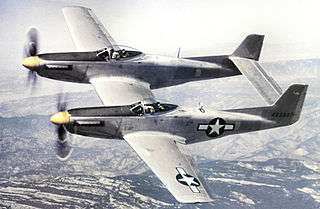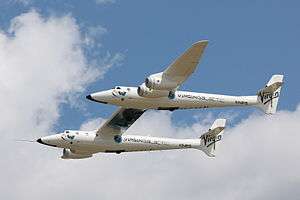Twin-fuselage aircraft

A twin-fuselage aircraft has two main fuselages. It is distinct from the twin-boom configuration which has a single main fuselage with two subsidiary boom structures.
Twin fuselages have been adopted for various reasons, and a few types have entered production.
Early seaplanes
During and after World War I a number of twin-fuselage floatplanes and twin-hulled flying boats were constructed, and several entered production:
The Blackburn T.B. of 1915 was a long-range floatplane for anti-Zeppelin patrol. A handful of production examples were delivered but few were used operationally.
The British Wight Twin Seaplane of 1916 was a prototype long-range floatplane intended to carry an 18-inch torpedo. Its design was a twin-fuselage variant of the earlier Wight Twin Landplane of twin-boom configuration, i.e. with the central nacelle removed and the crew housed in the remaining bodies on either side. The French Labourdette-Halbronn H.T. 1 and H.T.2 flying boat prototypes of 1918-1919 were intended for a similar role.
Savoia-Marchetti produced two twin-hulled flying boat types, the S.55 multirole flying boat of 1924 and the S.66 airliner of 1931, both of which took advantage of a twin hull/fuselage to provide the same stability of a twin float design, but with a hull. The S.55 proved very successful, being produced in large numbers.
The Tupolev ANT-22 flying boat prototype conceptually followed the Savoia's, but was much larger and despite flying in 1934 never progressed beyond a single prototype due to poor performance.
Heavy glider tug
During World War II the need arose for a heavy glider tug capable of towing the large Gotha Go 242 and even larger Messerschmitt Me 321 Gigant. The Heinkel He 111Z Zwilling (twin) was created by joining two He 111 fuselages with a new wing centre section and adding a fifth central engine. Although liked by its pilots when it first flew in 1941, even the 111Z could not tow a fully laden Gigant, and although a small batch became operational they saw little action.
A few variants were developed for roles such as long-range reconnaissance or air-launched anti-ship missile carrier, but none entered service.
Heavy fighters
During World War II a need arose for a heavy fighter, which could not be met by a new design proposal in a reasonable time frame. Joining two examples of an existing light fighter aircraft was one way to achieve this.
The German Messerschmitt Bf 109Z twin (Zwilling) Bf 109 prototype was destroyed in an attack by the British in 1943 before it was completed, and the project subsequently abandoned. The later Me 609 twin Me 309 project was never built.
In 1944 Dornier proposed the Dornier Do 635 long-range reconnaissance variant of the Do 335 Pfeil heavy fighter, to have twin Do 335 fuselages and four engines. It was never built.
The Italian Savoia-Marchetti SM.92 prototype was unusual in being an adaptation of a twin-boom design but did not enter production.
The North American F-82 Twin Mustang arrived too late to enter service during the War but later saw service in the Korean war.
Space launchers
More recently the idea of a dedicated re-usable mothership design capable of carrying and launching a spacecraft has gained interest. The twin fuselage configuration offers the advantage of a clean payload area underneath the wing centre section.
The Scaled Composites White Knight Two is under development, with the first example now flying.
Past projects have included the Conroy Virtus and Twin fuselage Lockheed C-5 Galaxy Shuttle transport aircraft of 1974.
Current projects include the Scaled Composites Model 351 Roc proposed for Stratolaunch and NASA's Towed Glider Air-Launch Concept.
List of twin-fuselage aircraft
Types are listed in chronological order of first flight or, for those which never flew, of project announcement.
| Type | Country | Class | Role | Date | Status | Notes |
|---|---|---|---|---|---|---|
| Belyayev DB-LK | USSR | Propeller | Bomber | 1940 | Prototype | |
| Bestetti BN.1 | Italy | Propeller | Private | 1940 | Experimental | Sportplane. |
| Blackburn T.B. | UK | Propeller | Patrol | 1915 | Production | Floatplane. |
| Blériot 125 | France | Propeller | Transport | 1931 | Prototype | 12 seat airliner. |
| Caproni Ca.4 | Italy | Propeller | Bomber and transport | 1915 | Production | Series of types.[1] |
| Conroy Virtus | USA | Propeller | Transport | 1974 | Project | Shuttle transport |
| Dornier Do 635 | Germany | Propeller | Fighter | 1944 | Project | Twin Dornier Do 335 Pfeil proposal. |
| Twin Ercoupe | USA | Propeller | 1946 | Twin ERCO Ercoupe one-off conversion. | ||
| Fokker K.I | Germany | Propeller | 1915 | Prototype | Kampfflugzeug (twin fuselage with nacelle) | |
| Fouga CM.88 Gemeaux | France | Jet | Experimental | 1951 | Operational | Twin Cyclope, jet engine testbed, 2 built[2] |
| General Aircraft Twin Hotspur | UK | Glider | Experimental | 1942 | Twin General Aircraft Hotspur | |
| Heinkel He 111Z | Germany | Propeller | Utility | 1941 | Production | Glider tug. Variant of the He 111. |
| Labourdette-Halbronn H.T.1 | France | Propeller | Torpedo bomber | 1918 | Prototype | Flying boat. One H.T.1 (1918) flown.[3] |
| Labourdette-Halbronn H.T.2 | France | Propeller | Torpedo bomber | 1919 | Prototype | Flying boat. Two H.T.2 (1919) flown.[3] |
| Twin fuselage Lockheed C-5 Galaxy | USA | Jet | Transport | 1974 | Project | Shuttle transport aircraft proposal.[4][5] |
| Messerschmitt Bf 109Z | Germany | Propeller | Fighter | 1943 | Project | Twin Bf 109 prototype. Destroyed while under construction.[6] |
| Messerschmitt Me 609 | Germany | Propeller | Fighter | 1941 | Project | Twin Me 309 proposal.[6] |
| North American F-82 Twin Mustang | USA | Propeller | Fighter | 1945 | Production | Long-range. |
| Pipistrel Taurus G4 | Slovenia | Propeller | Experimental | 2011 | Prototype | Electric aircraft and competition winner. |
| Ricci R.1 | Italy | Propeller | 1917 | Prototype | Flying-boat | |
| Savoia-Marchetti S.55 | Italy | Propeller | Multirole | 1924 | Production | Flying boat. |
| Savoia-Marchetti S.66 | Italy | Propeller | Transport | 1931 | Production | Flying boat. |
| Savoia-Marchetti SM.92 | Italy | Propeller | Fighter | 1943 | Prototype | |
| Scaled Composites Model 348 White Knight Two | USA | Jet | Spacecraft launcher | 2008 | Prototype | |
| Scaled Composites Model 351 Roc | USA | Jet | Spacecraft launcher | 2011 | Project | Launcher for Stratolaunch spacecraft. |
| Scaled Composites Model 367 BiPod | USA | Propeller | 2011 | Experimental | Flying car, carried out "hops" under wheeled power. | |
| Thomas-Morse MB-4 | USA | Propeller | Utility | 1920 | Prototype | Mail plane |
| Towed Glider Air-Launch Concept | USA | Spacecraft launcher | 2013 | Project | NASA Dryden[7] | |
| Tupolev ANT-22 | USSR | Propeller | 1934 | Prototype | Flying boat. | |
| Wagner Twin Cub | USA | Propeller | 1952 | Prototype | Twin Piper Cub one-off conversion.[8] | |
| Wight Twin Seaplane | UK | Propeller | 1916 | Prototype | Variant of the Wight Twin Landplane of twin boom configuration. |
References
Notes
- ↑ "The Caproni Bombing Triplane CA-4-1915", Flight, Volume XI, Issue 25, No. 547, 19 June 1919, pp. 797–799. Retrieved: 29 October 2013.
- ↑ http://johnlinde.ca/Early_Designs.html
- 1 2 Davilla, J.; French aircraft of the first World War (2002), Flying Machines Press, Page 287
- ↑ Tails through time
- ↑ Shuttling the Shuttle: Twin fuselage C-5 Galaxy
- 1 2 Green, W.; Warplanes of the Third Reich, Macdonald and Jane's, 1970.
- ↑ 'Gliding' to Space: A Novel Means of Launching Space Satellites
- ↑ http://www.twinnavion.com/oddballs.htm
